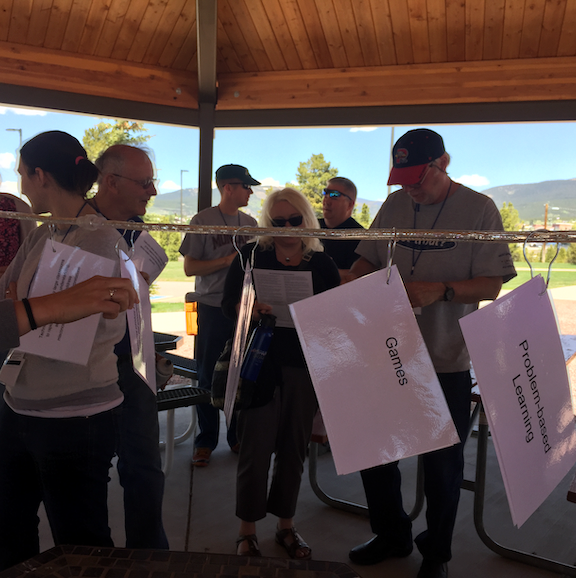Matching is an elegant way to solidify complex terminology, generate dialogue amongst a large group, initiate introductions or ice breaking and to create random pairs. It works well to begin by randomly handing learners either a term or a definition or term. The instructor or learning assistant can then give everyone a timeframe during which they seek the proper definition for their term or the proper term for the definition. We do not worry if there are terms that might be matched with more than one definition; this can beget rich discussion and explanation for why a particular definition might be better than another.
After each person finds their match and partner, we suggest having them do something active with their match. In the image that you see here, the LAMP fellows are placing their matches (active learning modalities and descriptions) onto a rope that symbolizes how inclusive each technique is. After the pairs have placed their definitions and matches, we have someone on the 'very inclusive' side of the spectrum share out. We also have someone from the middle and someone from the 'not so inclusive' side of the spectrum share.
In online environments, matching can be more challenging because of the difficulty in enabling the 'milling around the room' step. We have accomplished it by giving each learner a definition or term prior to a synchronous session and then having them post their term or definition, with their name on it, onto a Padlet. We then have everyone move their term or definition next to the proper match. Once these matches are made, we put the pair into their own breakout room to discuss.
In this writing, Dr. Michele Larson offers that matching activies are still useful in post-secondary instruction.

